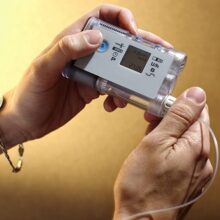The phenomenon of improvement of glucose to levels in a normal range and cessation of the need for medication can occur in some patients diagnosed with type 2 diabetes who are provided with lifestyle therapy, temporary pharmacotherapy, bariatric surgery, or combinations of these treatments.
However, this phenomenon is not yet fully understood in routine care settings, and many factors remain to be clarified. Moreover, since there are differences in insulin secretion and resistance between East Asian and Western populations, the natural history of diabetes seems to differ widely between Western populations and East Asians.
Therefore, these concerns lead Dr. Kazuya Fujihara and colleagues to investigate the incidence/one year relapse from remission and associated factors in patients with type 2 diabetes. In the Diabetes, Obesity and Metabolism paper, the authors addressed these research questions using a database of specialists’ clinics.
They analyzed the data of Japan Diabetes Clinical Data Management Study Group (JDDM) which is one of the largest cohorts of Japanese people with type 2 diabetes. They tracked the information on 48,320 people with diabetes in Japan. In one arm of the study, they calculated remission rates per 1000 person-years. The authors reported that the median follow-up was 5.3 years. During the study period, 3,677 remissions occurred.
The overall incidence of remissions per 1,000 person-years was 10.5 that was similar to 9.7 in the United Kingdom. In addition, those with HbA1c levels of 48 to 53 mmol/mol (6.5% to 6.9%), those taking no glucose-lowering drugs at baseline, and those with a ≥10% body mass index (BMI) reduction in 1 year, it was 27.8, 21.7 and 48.2, respectively.
Male sex, shorter duration, lower baseline HbA1c, higher baseline BMI, higher BMI reduction at 1 year, and no glucose-lowering drugs at baseline were significantly associated with remission. Similar results were obtained with maintenance of remission over 1 year as an outcome. In another arm of the study, the investigators revealed the factors that predicted relapse from remission in 1 year.
Among 3,677 individuals who entered remission, two-thirds (2,490) relapsed from remission within 1 year. Longer duration of diabetes, lower BMI at baseline, and lower BMI reduction at 1 year were significantly associated with relapse. Commenting on the significance of their findings.
Compared to Westerners, Asians have higher insulin sensitivity and a lower acute insulin response. In addition, Asians have a much lower obesity level than Westerners, and the pathogenesis of diabetes mellitus is very different between the two. Therefore, the relationships of baseline BMI and BMI reduction with remission and relapse may be greater in East Asian than in Western populations, implying ethnic differences in returning from overt hyperglycemia to nearly normal glucose levels.”
Hirohito Sone, Niigata University
While the findings of these analytical study are impressive and provide new insight on remission in patients with type 2 diabetes should be, the authors noted that “present study is an observational study and does not show a cause and effect relationship, and that future intervention studies with lifestyle and/or medication will be needed to confirm how many people actually achieve remission and how long the state of remission lasts in real world setting”.
Source:
Journal reference:
Fujihara, K., et al. (2023) Incidence and predictors of remission and relapse of type 2 diabetes mellitus in Japan: Analysis of a nationwide patient registry (JDDM73). Diabetes, Obesity and Metabolism. doi.org/10.1111/dom.15100.




